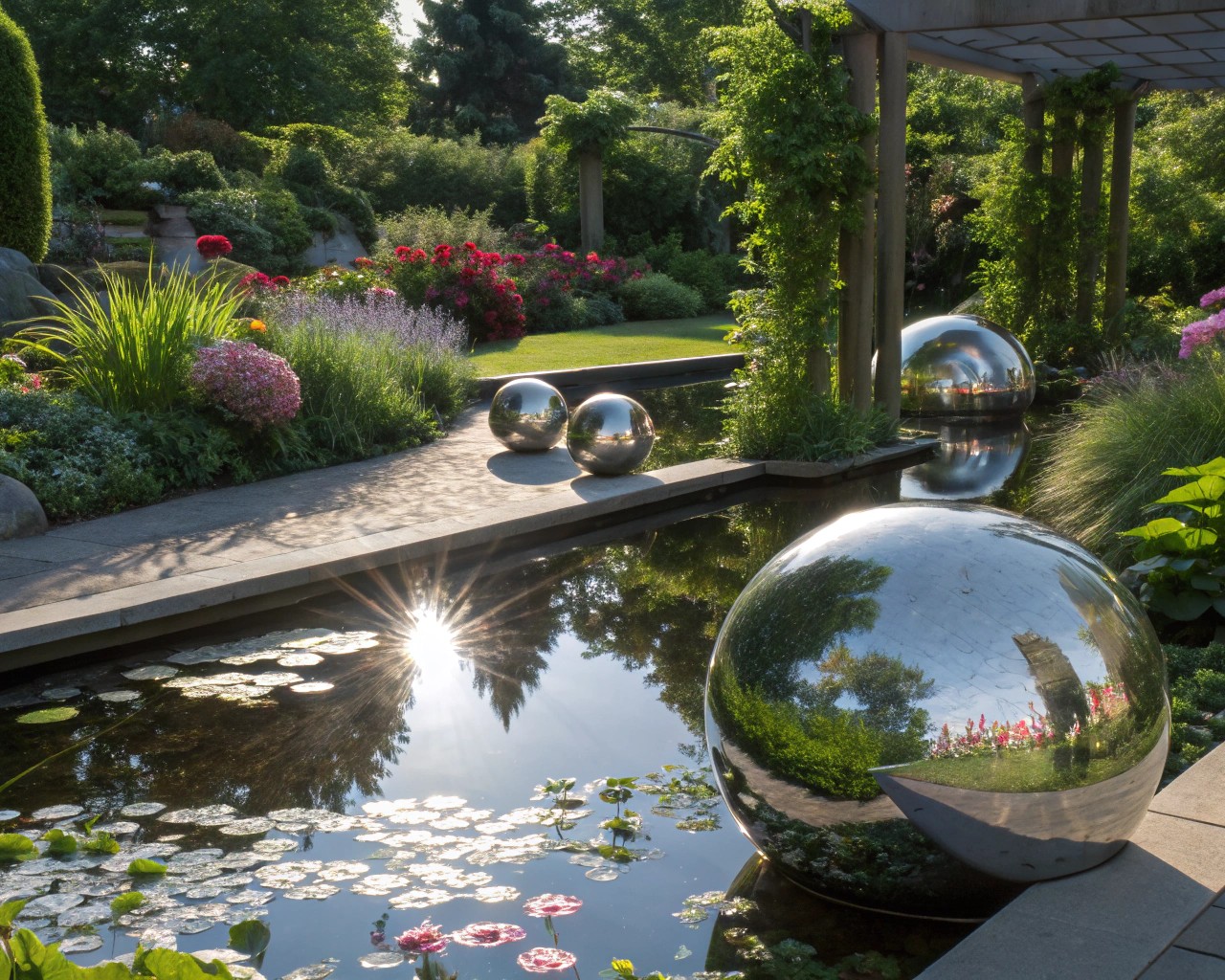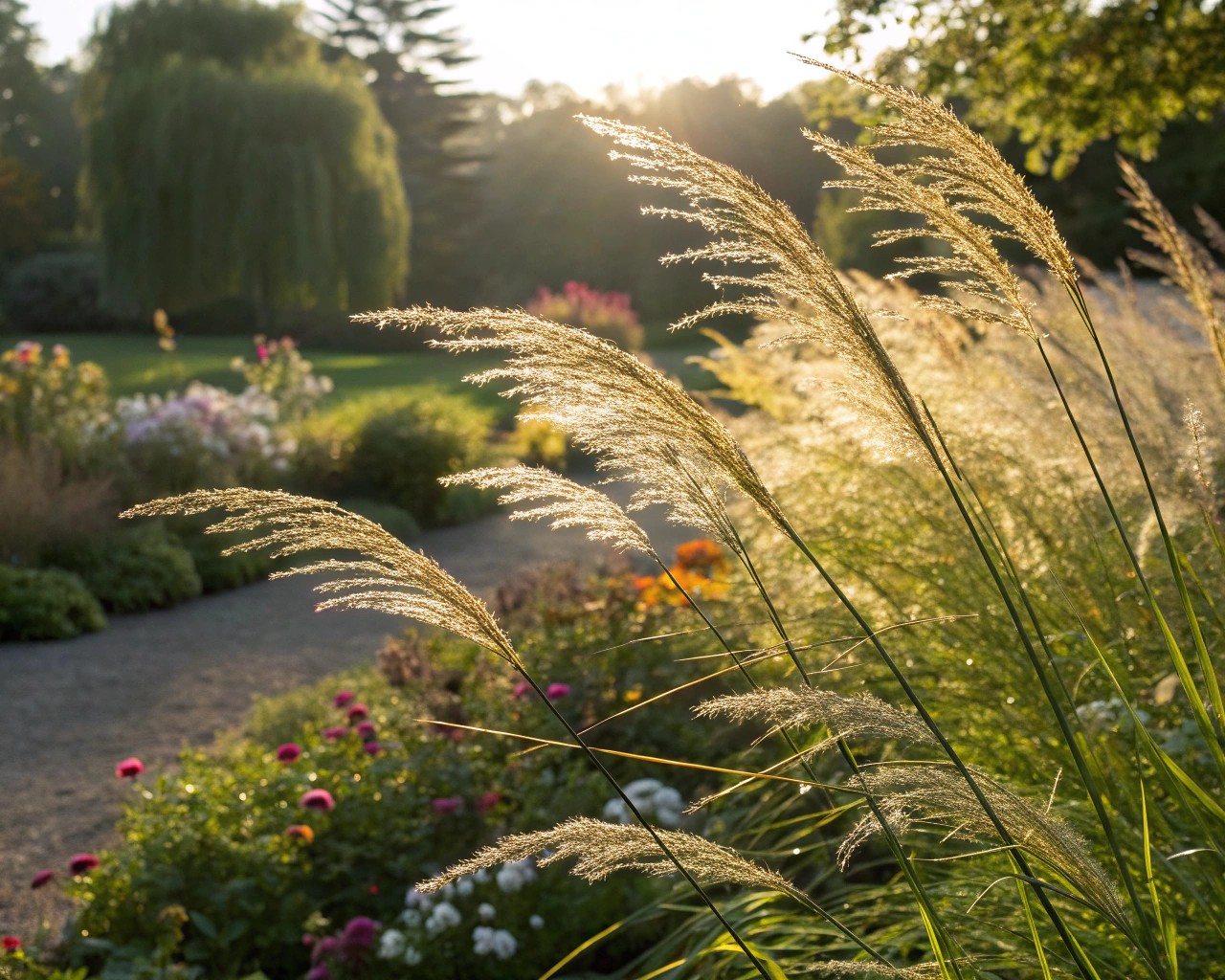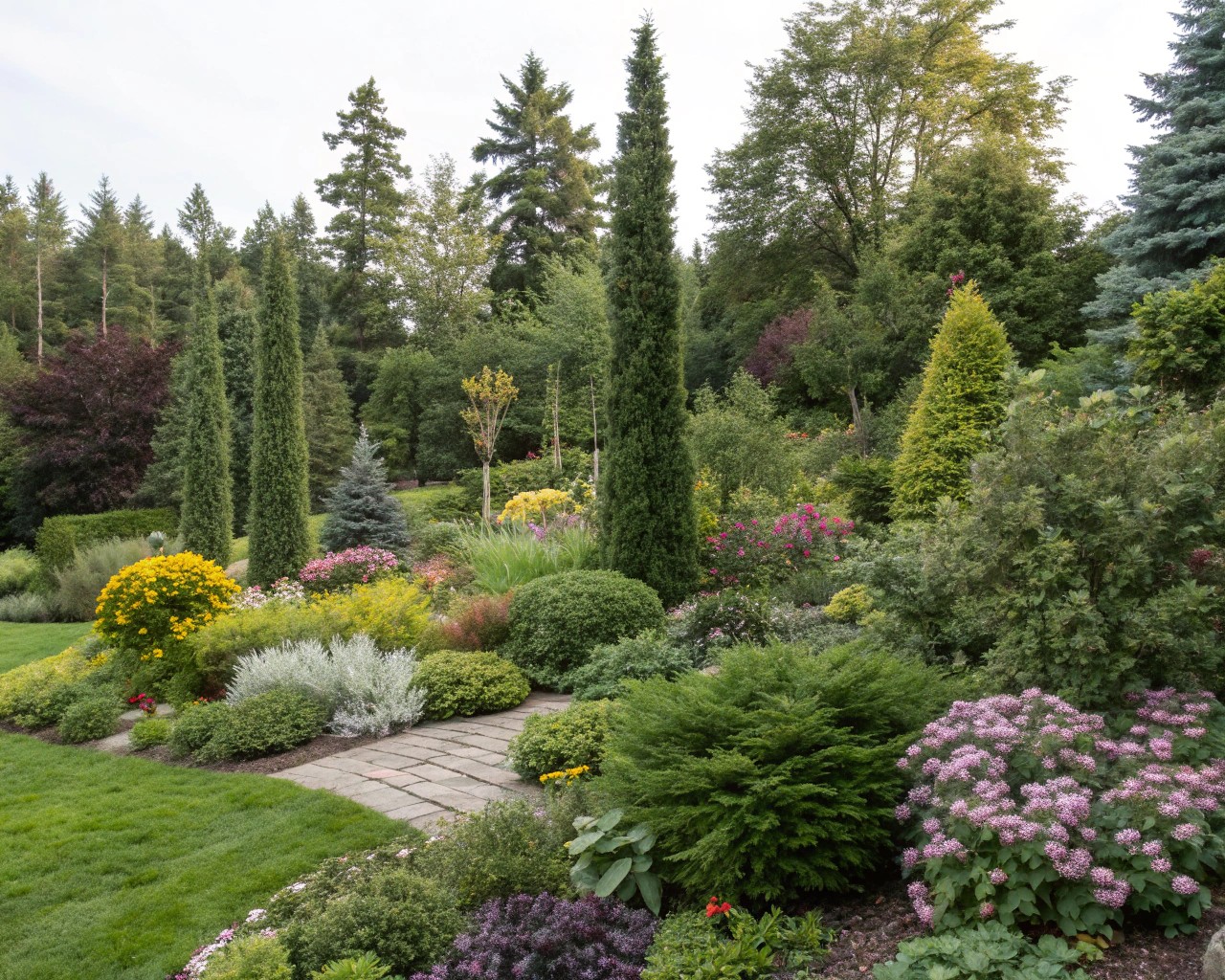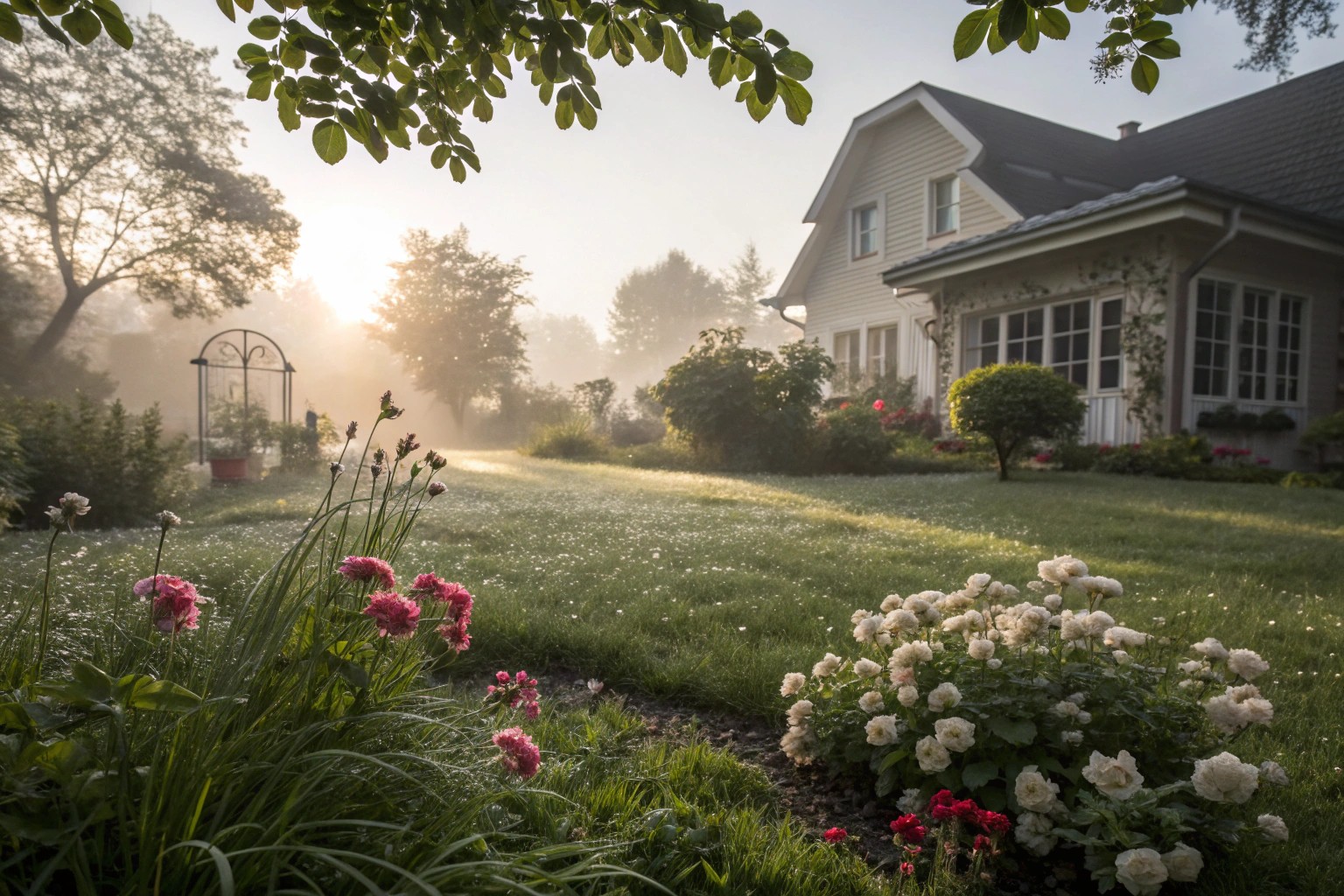The golden hour—that fleeting window when sunlight bathes everything in a warm amber glow—transforms ordinary gardens into enchanted spaces. This magical time, typically occurring just after dawn and before sunset, offers a unique opportunity for garden designers to create extraordinary experiences. When carefully planned, a garden can capture these ephemeral moments and extend their wonder through thoughtful design choices.
Understanding the Golden Hour

Golden hour is that cinematic time when the sun sits low on the horizon, casting long shadows and infusing everything with a honeyed luminescence. As a designer, I’ve found that this transformative light can elevate even the simplest garden elements into something remarkable. The quality of light during this time has a softer, more diffused character that minimizes harsh shadows and creates a naturally flattering glow across the landscape.
Golden Hour Timing by Season
| Season | Morning Golden Hour (Approx.) | Evening Golden Hour (Approx.) | Duration |
|---|---|---|---|
| Spring | 6:00 AM – 7:30 AM | 5:30 PM – 7:00 PM | 60-90 min |
| Summer | 5:30 AM – 7:00 AM | 7:00 PM – 8:30 PM | 60-90 min |
| Fall | 6:30 AM – 8:00 AM | 5:00 PM – 6:30 PM | 60-90 min |
| Winter | 7:00 AM – 8:30 AM | 4:00 PM – 5:30 PM | 60-90 min |
Note: Times vary by location and exact date within each season
Principles of Golden Hour Garden Design
When designing a garden to maximize golden hour effects, you’ll want to consider orientation first and foremost. Western and eastern exposures naturally receive the most direct golden hour light. We approach each project by carefully observing how light moves through the space throughout the day.
As landscape designer Jessica Bell suggests, the most inviting outdoor spaces encourage us to pause, connect with nature, and actively participate in tending the environment around us, an approach she roots in a profound appreciation for plants and the natural world.
Key Design Principles:

-
Orient key garden features toward sunset/sunrise: Position seating areas, focal points, and architectural elements to face the direction of golden light.
-
Create depth with layers: Multiple planes of plants and structures create opportunities for light to filter through, creating dramatic effects.
-
Incorporate reflective elements: Water features, mirrors, and light-colored surfaces amplify golden light.
-
Draw the eye upward: Add vertical elements like pergolas and tall plantings to catch the last rays of sun and create drama.
-
Design broken-plan spaces: Consider your garden as a series of “rooms” rather than one open space, creating a journey that reveals itself gradually.
Plant Selection for Golden Hour Magic
The right plant palette can dramatically enhance golden hour effects. I’ve spent years observing how different plant species interact with this special light, and the results can be breathtaking.
Plants That Shine at Golden Hour:

- Grasses: Ornamental grasses with translucent seed heads catch and diffuse light
- Plants with fine foliage: Creates a feathery effect when backlit
- Plants with fuzzy or hairy textures: Traps light and creates a halo effect
- Specimens with interesting silhouettes: Creates dramatic shadows
- Plants with warm-toned flowers and foliage: Amplifies the golden hue
The Golden Hour plant collection, for example, captures the contrast of warm, honeyed light with cool blue sky through varieties like Zinnia ‘Queeny Lime Orange’, Cosmos ‘Apricot Lemonade’, Marigold ‘Chedi Orange’, and Eryngium ‘Blue Glitter’ – creating a garden “bathed in warmth, color, and pure evening glow.”
Structural Elements for Capturing Light
Hardscape elements play a crucial role in golden hour garden design. We often recommend incorporating these elements strategically to frame and enhance the light.
Vertical Elements:

Many years ago, I attended a design course that emphasized drawing the eye upward to create drama and a greater feeling of space. This principle applies beautifully to gardens as well. Adding features like pergolas and varying planting heights draws the eye upward and creates visual interest at eye level.
Strategic Placement:
One design studio emphasizes that their goal for every project is to unlock the site’s inherent potential. They achieve this by starting with attentive listening and careful observation, which then guides a design response that is both sensitive to the location and impactful.
The Art of Garden Lighting: Extending the Magic
Lighting design is essential for preserving the magic of golden hour long after the sun has set. As one lighting professional advises, achieving a truly magical garden atmosphere requires a multi-layered approach, blending different lighting types to create varied effects and a rich visual composition.
Three Essential Lighting Layers

| Lighting Type | Function | Examples | Best Locations |
|---|---|---|---|
| Ambient Lighting | Creates a soft background glow | Low path lights, wash lighting | Throughout the garden to provide general illumination |
| Focal Lighting | Highlights specific features | Spotlights, directional lights | Trees, water features, sculpture, paths |
| Accent Lighting | Adds decorative touches | Lanterns, festoon lights, candles | Seating areas, tables, hanging from trees |
These layers work together to recreate the warm, dimensional qualities of natural golden hour light. “By incorporating a control system, you can adjust the garden’s lighting and atmosphere to suit any occasion,” as demonstrated in the Pine Cottage case study.
Case Study: The Pine Cottage Transformation

A luxury home in Orpington called Pine Cottage serves as an excellent example of golden hour principles in action. While the interior lighting was exquisite, the garden did not match this level of sophistication.
The designers created a lighting scheme that would enhance the beauty of the garden, creating a sense of drama and atmosphere while ensuring a seamless integration between interior and exterior. They implemented:
- Moon lighting: Soft, low-level lighting for flowerbeds
- Spot.Z lighting: Positioned at the base of trees for precision highlighting
- Spot.S lighting: Used for smaller decorative plant pots
- Integrated control system: For customizable lighting control
The result was a stunning transformation that created a beautiful interplay of light and shadow, highlighting key features of the garden. The clients were overjoyed with how the lighting had completely revitalized their outdoor space.
Creating Your Golden Hour Design Plan
When approaching your own golden hour garden design, I recommend following these steps:
-
Observe the space during golden hour: Make note of how light enters the space, where shadows fall, and which areas receive the most dramatic lighting.
-
Create a detailed site plan: Begin by sketching your garden’s layout. Be sure to note important existing elements like pathways, terraces, plants, and any water features.
-
Determine lighting functions: Consider which areas need functional lighting for safety or visibility, versus those where mood or accent lighting would be more appropriate.
-
Choose the right fixtures: Select lighting types best suited for different garden elements; for example, spotlights are effective for casting beautiful shadows, defining architectural features, or illuminating walkways.
-
Consider light color and intensity: Remember that the specific color and brightness of the light significantly influence the overall mood you wish to create in the garden.
Seasonal Considerations
Golden hour varies significantly by season, offering different design opportunities throughout the year. In summer, golden hour occurs later in the evening, allowing for extended outdoor entertaining. Winter golden hours are earlier but can create spectacular effects with bare branches and frost.
When designing, we consider how the garden will capture light in different seasons. I often recommend including features that work well during the golden hour regardless of season—evergreen structural elements, water features, and carefully positioned lighting.
Practical Implementation Tips
For DIY Enthusiasts:
If you’re implementing golden hour design principles yourself, start small:
- Begin with a seating area positioned to face the sunset
- Add 1-3 specimen plants with golden hour-friendly characteristics
- Incorporate simple solar lighting along paths
- Add one reflective element like a small water feature
- Observe the effects and expand gradually
For Those Working with Professionals:
When hiring a designer, look for someone who understands the importance of light in garden design. Ask about their approach to garden lighting and whether they consider golden hour effects in their planning process.
Personal Reflection
The magic of golden hour is what initially drew me to landscape design. I remember sitting in a garden at sunset, mesmerized by how the ordinary plants I’d seen earlier that day were transformed into extraordinary sculptures of light and shadow. That experience taught me that timing is everything in garden appreciation.
Every project presents an opportunity to support not just aesthetic beauty but also habitat and biodiversity. Gardens designed with golden hour in mind tend to include more varied textures, heights, and plant forms—qualities that also benefit wildlife and create more resilient landscapes.





















